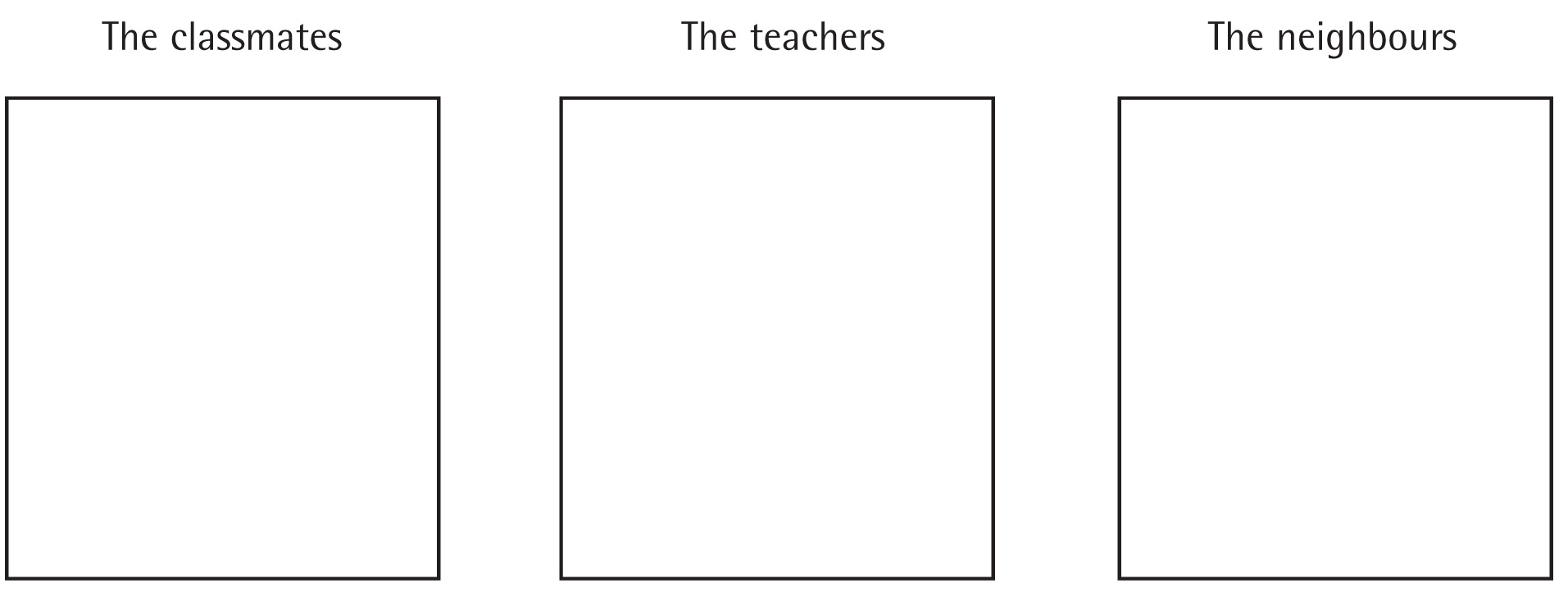Lesson 2: How differently a person can be described…
Living Democracy » Textbooks » Living in democracy » Part 1: Individual and community » UNIT 1: Stereotypes and prejudices » Lesson 2: How differently a person can be described…How to get a better picture of a person
| Learning objectives | The students realise that different descriptions may refer to one and the same identity. |
| Student tasks | The students rehearse and act scenes and present their written work. They discuss the scenes they have seen. |
| Resources | The results of the first lesson (the rehearsed role play and the lists of adjectives on posters) become the basic material of the second. The students realise that without their participation and their products, the unit cannot be continued. |
| Methods | Role play, presentations and guided plenary discussion. |
The lesson
Part 1
The teacher explains the procedure of the lesson. He gives the groups another five minutes to rehearse their scenes. The scenes are then presented.
First, one member of the group reads the entry from the diary to the class using the poster from the first lesson. Then the group acts the scene. It is recommended that all the scenes should be presented without interruption. If more than one group has received the same diary entry, they should act these scenes, with slight variations, one after the other.
After the groups have finished, the teacher gives positive feedback and again sums up the goal of this sequence of scenes. If the class is used to this form of teaching then the students can move on to the next step. If not, it is advisable to give the students the opportunity to review and reflect on the sequence of scenes, looking at aspects of content and form.
Here are some examples of how the teacher may prompt reflection on the role play:
- What was our experience as a group?
- Have I discovered something new about myself?
- How did we manage to show the characters as they were?
Part 2
During the second part of the lesson, the students arrange their chairs in one or two semicircles around the blackboard. Then the teacher displays the posters side by side on the blackboard. The students watch how the presentation unfolds:
This is how the others see him:

In the follow-up discussion, the students should understand that it is perfectly normal for a person to be viewed differently by different people or groups. They should realise that they cannot use categories such as “true” and “false” to describe the viewpoints. In fact, in order to do justice to the boy, it would be wrong to allow only one point of view to describe him.
Possible prompts for the teacher to support critical thinking in class:
- When I see these different descriptions I feel a bit confused.
- So what’s true now?
- Who is Max really?
The teacher waits until a number of students have raised their hands and then lets them give different answers. He notes these answers in a list on the blackboard or, preferably, a flip chart:
What can we say about the boy?
- How can we describe him appropriately?
- Statement 1
- Statement 2
- Statement 3
- Statement 4
- Statement 5
At the end of the lesson the teacher sums up the insights gained by the students during the first two lessons. It is an advantage if a flip chart is available on which to note down these points so that they can be presented in the following lessons. The following points may prove useful:
Identity
|
At the end of the lesson, the teacher asks the students for feedback, taking care not to comment on the students’ remarks.
There are different ways in which this can be done. Asking the class as a whole is not always the best solution, as more often than not, the same few students will answer and the feedback will remain unspecific. The dartboard model is therefore recommended here. This is a method of getting quick feedback that allows each student to specify his or her answers. The appendix gives a detailed description of this form of feedback.
The teacher then gives a preview of the next two lessons, in which the class will not look at individual people, but at groups within society and at whole countries.

